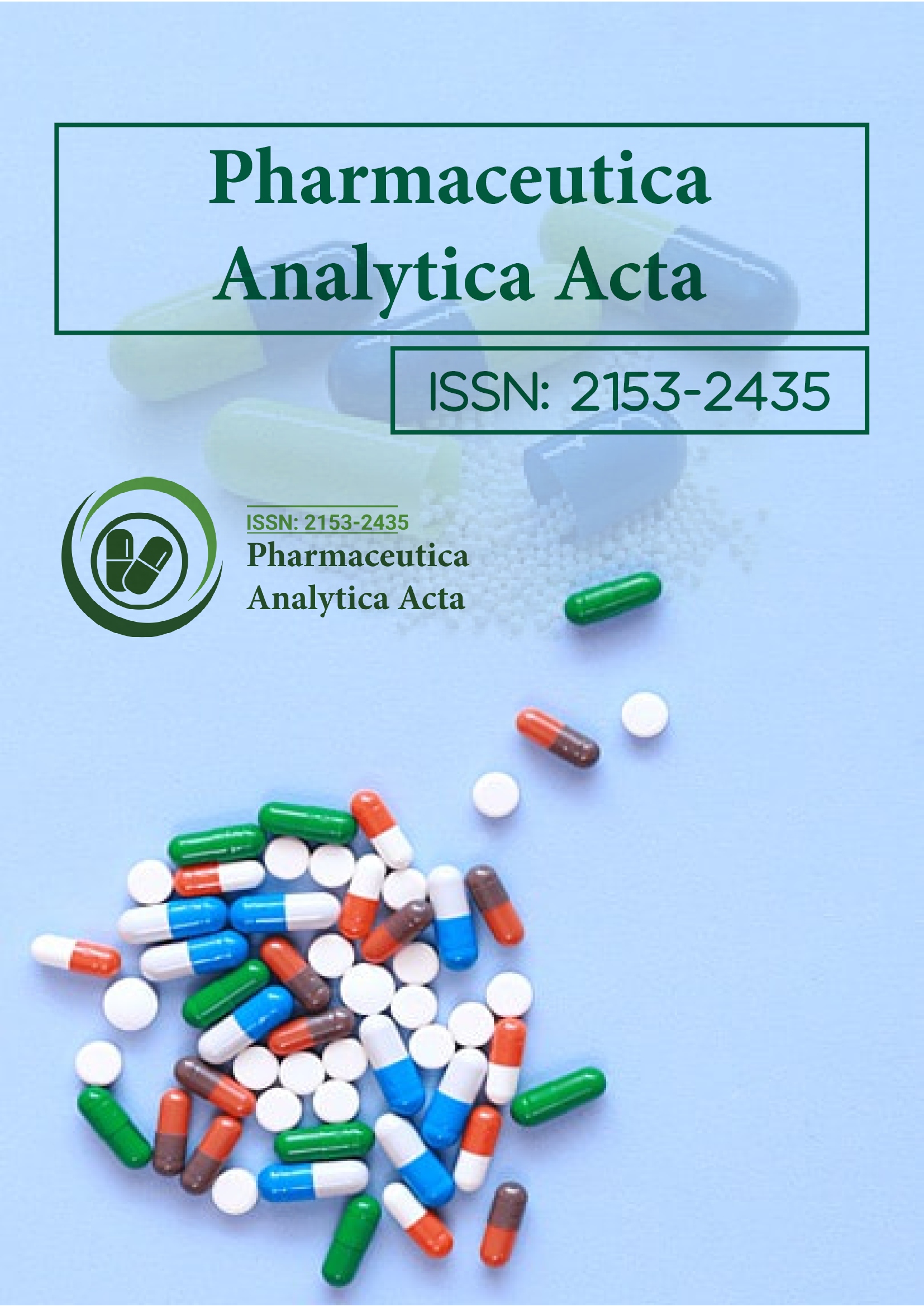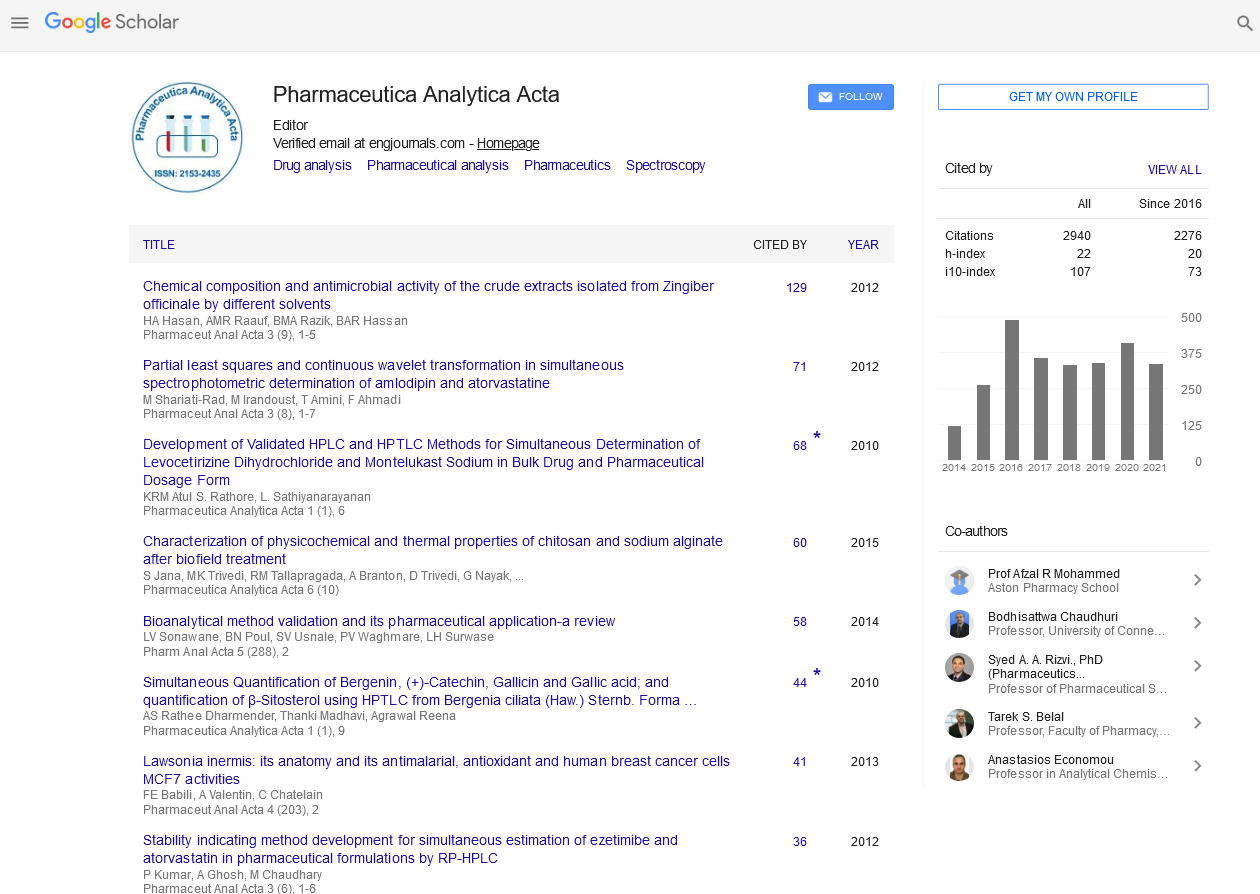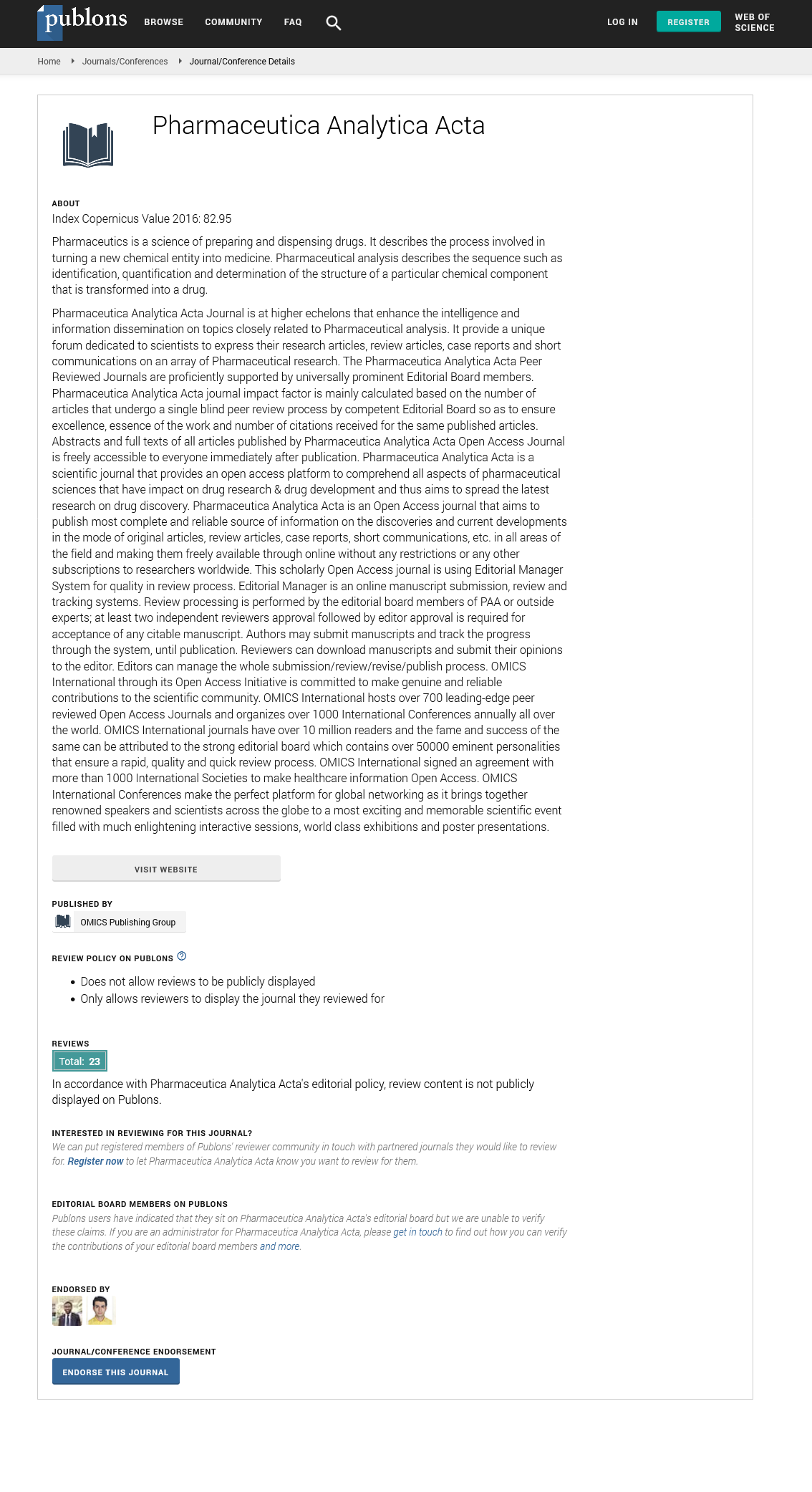Indexed In
- Open J Gate
- Genamics JournalSeek
- Academic Keys
- JournalTOCs
- The Global Impact Factor (GIF)
- China National Knowledge Infrastructure (CNKI)
- Ulrich's Periodicals Directory
- RefSeek
- Hamdard University
- EBSCO A-Z
- OCLC- WorldCat
- Publons
- Geneva Foundation for Medical Education and Research
- Euro Pub
- Google Scholar
Useful Links
Share This Page
Journal Flyer

Open Access Journals
- Agri and Aquaculture
- Biochemistry
- Bioinformatics & Systems Biology
- Business & Management
- Chemistry
- Clinical Sciences
- Engineering
- Food & Nutrition
- General Science
- Genetics & Molecular Biology
- Immunology & Microbiology
- Medical Sciences
- Neuroscience & Psychology
- Nursing & Health Care
- Pharmaceutical Sciences
Perspective - (2025) Volume 16, Issue 3
Analytical Perspectives on Drug Excipient Interactions
Rosa Almeida*Received: 30-Aug-2025, Manuscript No. PAA-25-30231; Editor assigned: 01-Sep-2025, Pre QC No. PAA-25-30231; Reviewed: 16-Sep-2025, QC No. PAA-25-30231; Revised: 22-Sep-2025, Manuscript No. PAA-25-30231; Published: 30-Sep-2025, DOI: 10.35248/2153-2435.25.16.829
Description
Drug and excipient compatibility is a critical aspect of developing safe and effective dosage forms. When formulating medicines, the active ingredient is combined with supporting substances that serve roles such as improving stability, facilitating administration and enhancing patient comfort. However, unwanted physical or chemical interactions between the active substance and excipients can negatively affect the strength, quality or stability of the finished product. Detecting and understanding these interactions early helps prevent failures in production and ensures that the medication maintains its intended therapeutic performance. By studying how active compounds behave when mixed with various excipients, scientists can ensure consistent results and safeguard patient well-being throughout the product’s shelf life. Several modern techniques are commonly used to assess the compatibility between active ingredients and excipients. Differential scanning calorimetry helps identify thermal behaviors such as melting points, crystallization and transitions in physical state, which indicate potential changes due to interactions. Infrared spectroscopy provides insight into chemical modifications by detecting shifts in absorption patterns that may signal the formation of new bonds or alterations in molecular structure. Chromatographic approaches such as high-performance liquid chromatography are useful for detecting and quantifying degradation products that may result from reactions between components. These evaluations help determine the rate and extent of possible degradation, offering a detailed understanding of how different ingredients may influence each other within a formulation. Combining multiple methods ensures a complete and reliable assessment of compatibility. Performing compatibility testing during the early stages of formulation design is considered an essential step. Conducting such evaluations before large-scale manufacturing can prevent costly setbacks, reduce development time and improve the reliability of the final product. Experiments are often designed to mimic manufacturing and storage environments, exposing mixtures of active substances and excipients to different levels of temperature, humidity and light. Observing the resulting changes helps identify combinations that may cause degradation, phase separation or reduced potency. These insights enable formulation scientists to choose appropriate excipients that do not compromise drug stability or therapeutic activity. Investigations into various dosage forms such as tablets, injectable and topical preparations highlight that each product type requires tailored approaches, depending on solubility, pH and environmental sensitivity. This proactive approach ensures that any potential incompatibility is discovered and addressed early in the development process.
Beyond detecting incompatibilities, scientists also explore ways to prevent or reduce them. One effective strategy involves forming inclusion complexes, where the active ingredient is enclosed within a stabilizing carrier that shields it from reactive excipients. Another approach is applying protective coatings to solid dosage forms to physically separate reactive components. These interventions are evaluated using modern instruments to confirm that they maintain the chemical integrity and desired performance of the active substance. For instance, differential scanning calorimetry can confirm that the thermal stability of the drug remains unchanged, while infrared spectroscopy can verify that no new chemical bonds have formed. By documenting both the issue and its resolution, scientists create valuable references for future formulation efforts, ensuring reproducible and reliable outcomes. This demonstrates that compatibility testing is not only about identifying potential problems but also about guiding improvements that enhance product stability and effectiveness. Such evaluations also play a major role in meeting regulatory expectations. Authorities require evidence that possible drug–excipient interactions have been carefully studied and addressed. Detailed records of compatibility studies strengthen product approval applications by demonstrating that the formulation is stable, safe and effective over its entire shelf life. Understanding the mechanisms of interaction further helps in predicting potential challenges when new excipients or similar compounds are introduced. This foresight accelerates the development of innovative dosage forms and improves the overall efficiency of product design.
Continuous progress in this field contributes not only to safer products but also to the advancement of excipient technology itself. By understanding how different excipients influence chemical stability and performance, manufacturers can design new materials that enhance product robustness and extend shelf life. Improved excipients can reduce the need for additives, simplify formulations and improve patient outcomes by maintaining consistent drug delivery. Moreover, reliable compatibility data supports sustainable manufacturing by minimizing the risk of production failures and reducing the need for reformulation. In summary, studying the compatibility between active ingredients and excipients is a foundational part of developing effective dosage forms. Using a combination of thermal, spectral and chromatographic methods, scientists can identify even subtle physical and chemical changes that could compromise product quality. Early detection allows for the intelligent selection of excipients, minimizing the chance of instability and ensuring that medications perform as intended. Verification of stabilization techniques confirms that preventive strategies are working as expected and that the product remains safe and effective throughout its lifecycle.
Citation: Almeida R (2025). Analytical Perspectives on Drug Excipient Interactions. Pharm Anal Acta. 16:829.
Copyright: © 2025 Almeida R. This is an open-access article distributed under the terms of the Creative Commons Attribution License, which permits unrestricted use, distribution and reproduction in any medium, provided the original author and source are credited.
Sources of funding : © 2025 Almeida R. This is an open-access article distributed under the terms of the Creative Commons Attribution License, which permits unrestricted use, distribution and reproduction in any medium, provided the original author and source are credited.


